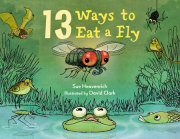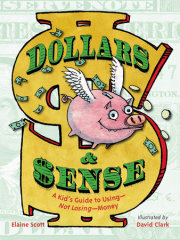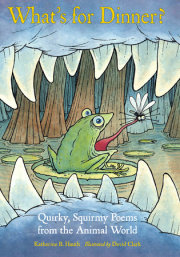There’s no way to know when the first scam took place. I like to imagine that one of our prehistoric ancestors convinced another to trade his collection of shells for a “really great cave” just over the next hill. (Spoiler alert: there was no cave over the next hill.)
Whatever occurred, we know this much for sure: humans have been tricking one another for a very long time. That’s no surprise. But what is amazing is that many of the earliest scams are still in use today. And the basic premise behind every scam—deceiving someone to get something you want from them—is much older still.
Humans have invented tons of tremendous things. There’s the wheel, of course. And antibiotics. The internal combustion engine. Stuffed-crust pizza. Instagram.
But one thing humans did not invent is deception. The animal kingdom is home to quite a large number of accomplished fakers. Different animals carry out their deceptions in different ways. One of the most basic forms of deception is camouflage. Camouflage is why grasshoppers are green, while leopards have spots. When a branch of the bear family slowly migrated north, their hair got lighter, the better to blend in with their new, snowy environment.
By the way, polar bear hair is not really white—it’s transparent. It just looks white, both to human eyes and to seal eyes. (Unfortunately for seals.)
Another example is how stripes help zebras avoid being eaten by lions. You might think that their black-and-white coloring would make zebras stand out against the long grasses of their habitat. But lions are colorblind! When a lion looks at a herd of zebras, all it can see is a mass of waving lines.
Basic coloration is just the beginning of animal deception. Some animals can actually change color—the chameleon is famous for it, of course, but cuttlefish, squid, and octopuses can do it as well. Certain types of spiders and beetles can, too.
Other animals go even further, using trickery to fool their prey. For example, a Central American snake called the cantil (similar to a cottonmouth) has a little white bit on its tail that looks like a worm. Birds and frogs try to catch the worm, only to realize too late that they are the cantil’s dinner instead. Similarly, the deep-sea anglerfish has a lure on the top of its head that it uses to attract smaller fish. When a little fish touches the lure, the angler’s jaw snaps shut automatically. The green heron is even smarter: it deliberately drops small bits of bait into the water to attract fish, and when the fish come to the surface to eat, they become food.
Some animals are even good actors. You’ve probably heard how the opossum is famous for playing dead to escape predators. A number of birds, including grouse, killdeer, some plovers, and the mourning dove, will put on what scientists call a distraction display—limping around and squawking as though they are injured—in order to lure predators away from their nests. In Mexico a small jungle cat called a margay mimics the cries of baby monkeys. When the adult monkeys come to check on their young, the margay attacks and eats them.
But the cleverest animals of all may be the ones that can trick other animals into doing their bidding. The cuckoo bird, for example, lays its eggs in other birds’ nests and lets the other birds do all the work of feeding and caring for their young. Some types of ants do the cuckoo one better: slave-maker ants enter the colonies of other ants, changing their scents to mask their approach. Once inside, they take the other colony’s larvae prisoner and bring the babies back to their own colony to serve as slaves. Occasionally the slave ants rebel and kill their overseers. I am not even kidding; this is really a thing.
I know what you’re thinking: Why am I reading about animal fakers? I thought this book was about con artists! Don’t worry; you haven’t been scammed. But it’s worth noticing how similar the many techniques of con artists are to the many ways animals deceive each other.
Want to see some human camouflage? Check out chapter 5, which is packed full of impostors. A woman named Cassie Chadwick blended right in with the upper crust of the early nineteenth century, convincing everyone she was an heiress when she was nothing of the sort. About eighty years later a young hustler by the name of David Hampton scammed New York City’s rich and famous simply by pretending he was one of them. And then there was iconic financial scammer Charles Ponzi, who specialized in appearing so fabulously wealthy that you’d never imagine he was robbing you.
Or how about the lure technique—those animals that offer something tempting to draw in their unsuspecting prey? Frankly, anyone who’s ever played three-card monte, listened carefully to a pyramid scheme, or responded to a Nigerian prince’s email is no smarter than the little fish that cozy up to an angler right until its jaws go snap.
And those truly deceitful animals we discussed—like the cuckoos and the slave-maker ants? They have a lot in common with the handiwork of Thierry Tilly. He managed to convince a family of French aristocrats that they were targeted for murder, and that their only salvation was to turn over all their money, abandon their chateau, and take jobs at Burger King in order to support Tilly. Slave-maker ant, indeed!
For all our similarities to animal deceivers, though, there are certain abilities humans have that most other species don’t. A big one is the ability to entertain one another. Sure, our cousins in the primate family know how to have a good time, and some researchers are convinced that dogs can understand certain types of humor. But has a chimpanzee ever carved a ten-foot giant out of stone just to win an argument? Do dogs sit around trying to impress one another by guessing each other’s birthdays? Doubt it.
Animals have an impressive range of skills for deception, but only humans understand what the great P. T. Barnum called “humbug.” Humbug refers to the idea of deception as entertainment. Whether it’s magic, spoon bending, tarot-card reading, or creating fake aliens for fun and profit, humans are uniquely wired for all manner of deception. And we use our scamming abilities for a whole range of reasons—not just for entertainment, but also to gain advantage in war, and to gain financial advantage as well. We have even put our faith in quack doctors because we desperately want their empty promises to come true.
In this book you will encounter all these types of fakers and many more. You will learn how they do it, and you’ll be asked to contemplate why people are so eager to be fooled. I promise you’ll become an expert on cons, hoaxes, and scams in no time.
But, please, I beg of you: use your hoaxing powers for good, not evil.
And afterward, be sure to write and tell me all about it for a sequel.
Copyright © 2018 by H. P. Wood (Author); David Clark (Illustrator). All rights reserved. No part of this excerpt may be reproduced or reprinted without permission in writing from the publisher.










